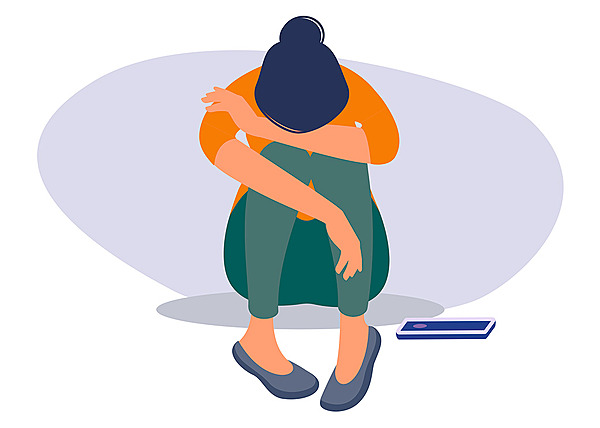
Stopping racism and discrimination is everyone’s issue
Higher education institutions are not racism-ree zones. Identifying the phenomenon requires awareness from everyone. Increasing equal treatment is also about working life skills.
Texti minna hiidensaari images iStock JA freevectormaps english translation marko saajanaho
“Racism and discrimination manifest in Finnish universities as harassment, ignorance, and indifference. This action, or inaction, integrates itself into the structures at the same time”, states Anna Rastas, who researches racism at the Tampere University.
“The universities have responsibilities to ensure people can work in peace. It can’t be up to minority students and researchers alone to intervene.”
Tampere University Adjunct Professor of the Sociology of Immigration Nafisa Yeasmin says racism involves a person feeling like an outsider due to their background. Is this person included in discussions and networks?

“Without people you know in your work community, there is no sharing of ideas and fewer opportunities. Getting left out of research teams is a major problem faced by international students.”
A focus group survey for international researchers highlighted that in addition to a person’s skin colour, geographical location is also a factor, as is the wealth of their country of origin.
“For example, if there are equal Pakistani and Indian candidates, the Indian candidate is preferred”, Yeasmin describes their experiences.
This phenomenon is most harmful when an individual faces racism due to words, actions or inaction”, states University of Helsinki Vice Rector Hanna Snellman.
What is taught, who gets employed?
Structural racism can also be seen in teaching and research content as, for example, Eurocentricness.
“Scientific knowledge is also built on questioning existing knowledge, including your own. If all the classics and scientists we cite as teachers are white men, that is a strong message we send to the students”, Rastas says.
Exclusion is also observable in employment. Both Rastas and Yeasmin note, however, that it is difficult to verify the occurrence of racist discrimination.
Exclusion is also observable in employment.
“That is why we need more tools to track the opportunities of various underrepresented groups”, Rastas explains.
Knowing this, the University of Helsinki has adopted procedures to support inclusivity.
“We have a dedicated training programme for international students. International students have been recruited as study advisors”, says Specialist Rebekka Nylund from the University of Helsinki’s Strategic Services for Teaching.
Listening and awareness are needed
All four interviewees bring up how people do not always even realise they are behaving in a racist manner. Reporting discrimination is a difficult experience for both the reporter and the accused party. According to Rastas and Yeasmin, this may lead to issues not being fully addressed.
“There should be a platform to allow issues to be discussed and broken down without any fears”, Yeasmin says.
“The first step towards stamping out racist harassment is to listen to listen to those trying to talk about their experiences with racism. We should not downplay or deny even when someone has not meant any harm, so to speak”, Rastas underlines.
University of Helsinki Vice Rector Snellman states the most important method is to increase awareness.

“There can never be too much training regarding unconscious prejudices. Surely, everyone could use some humility”, Snellman says.
Yeasmin agrees.
“This is not just a university issue; this is an issue for all of us.”
“The phenomenon is not always even recognised. We have only recently become aware of the existence of structural racism”, Nylund confirms.
”There should be a platform to allow issues to be discussed and broken down without any fears.”
Nafisa Yeasmin, Adjunct Professor of the Sociology of Immigration, Tampere University
Universities have devised equality and non-discrimination policies. According to Nylund, all higher education institutions have also created accessibility plans.
Rastas points out this is also about improving working life skills for the future. Does the university provide the tools necessary to identify racism in its different forms or address claims of discrimination?
“In Tampere, this has been corrected by including the university’s equality and non-discrimination policy as mandatory course material for all Social Research students.”
Snellman reckons more anti-racism actions have been taken for the students than university personnel. One practical method Snellman suggests is increasing the number of international members in administrative bodies and working groups.
“During my time as a dean, I saw the kind of richness diversity brings to the university”, Snellman says.
Inclusivity is often a question of language
The University of Helsinki conducts a survey for international students every two years, focusing on matters such as employment, finances, and social relationships while also determining if the student has experienced discrimination.
Inclusion or exclusion can often be linked to the operational language.
“Language-related issues were brought up in the latest survey’s open answers”, Nylund says.

International students may focus primarily on completing their master’s degree, causing language studies to fall to the background.
“There should be enough room in the curriculum to allow the opportunity to study Finnish. Many jobs require Finnish. It should be communicated to the students that it is enough to know at least some Finnish. The willingness to learn is important”, Nylund adds.
Yeasmin also knows the importance of knowing the language as an equality-increasing factor in the experiences of international students and researchers.
“The intensive course on Finnish is important to them.”
Discussions about the government’s direction
“The structures that produce and reproduce racism in universities are also influenced by forces outside the university”, Rastas says.
The current government programme states any individual with an employment-based residence permit must leave the country if their employment is terminated and they do not enter into a new employment contract within three months,
“This has caused uncertainty and fear among the university’s international students and staff. We have tried to calm them down, as no decisions have been made yet”, Snellman says.
“Information and expertise regarding racism are needed everywhere, but the policy and plans enacted by the government parties do not support that goal, quite the opposite in fact. Examples of this include politicians leaning on narrow definitions of racism researchers already abandoned decades ago and cutting back strategic research funding on the basis that, according to some, the Strategic Research Council failed to adequately address the negatives of immigration in their platform proposal. Such politics that downplay racism and even extend to research are concerning. Reacting to this, or not reacting, may give us insight on how our universities perceive their role as social institutions”, Rastas states.
PRINCIPLES FOR A SAFER SPACE
Esimerkiksi Helsingin yliopisto
For example, the University of Helsinki has outlined the Principles for a Safer Space it adheres to in all its operations. The principles state that the university’s events are “free from all kinds of discrimination, harassment, bullying and ridicule, as well as threatening behaviour.” All event participants commit to “meet all participants with an open mind, respect their diversity and let everyone define their own experiences.” On its website, the university outlines the principles as follows: “Anyone willing to commit to the following principles is welcome at our events:
- Meet others with an open mind, be kind, and demonstrate compassion and acceptance to both others and yourself.
- Let everyone be themselves. Respect diversity. Remember that you are not familiar with everyone’s abilities, experiences and boundaries.
- Avoid making assumptions about others. Let everyone define their personal experiences in their own way. Listen to others and try to understand them.
- If you offend someone, please apologise. Try to forgive others if they unintentionally offend you.”

